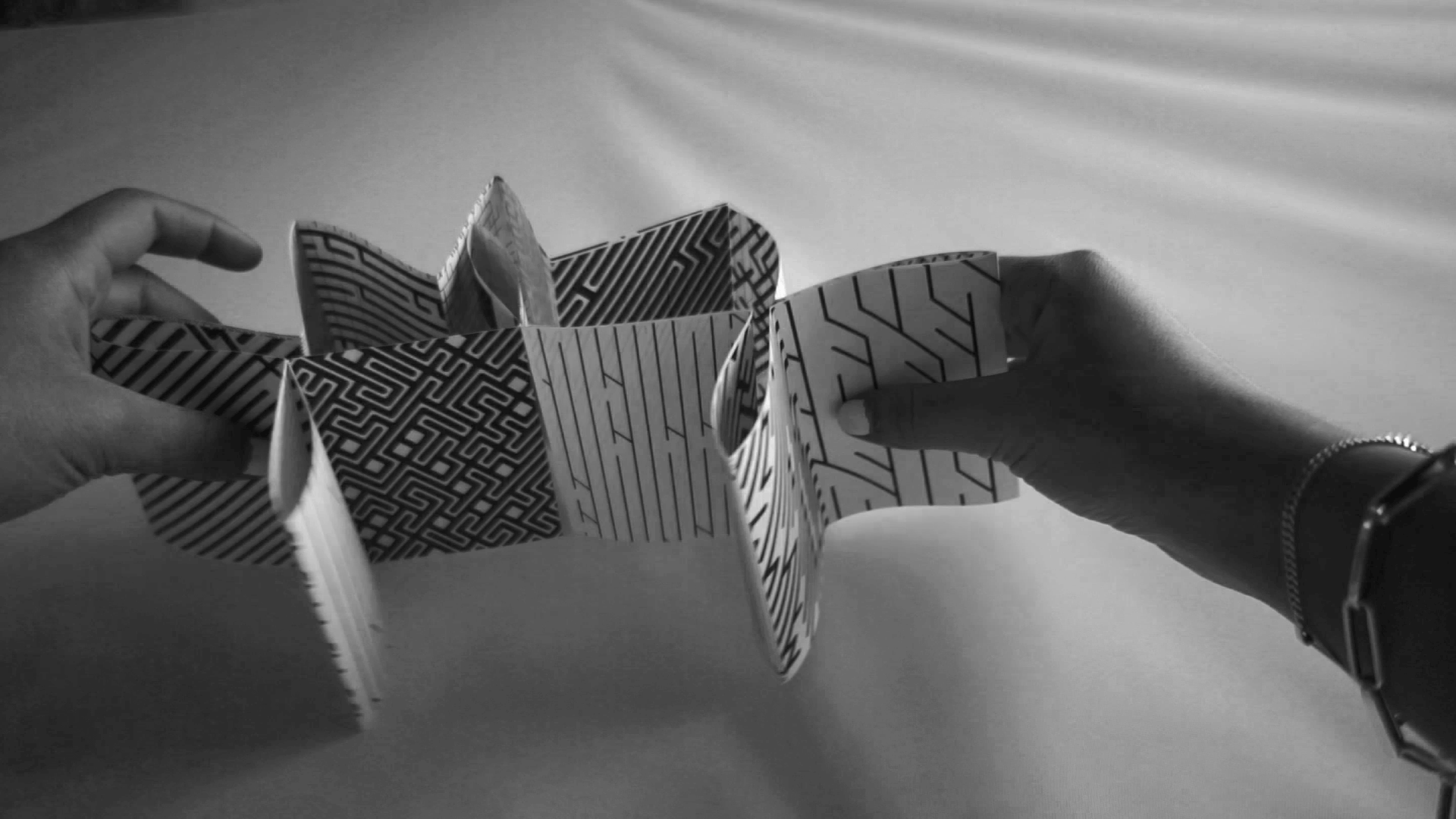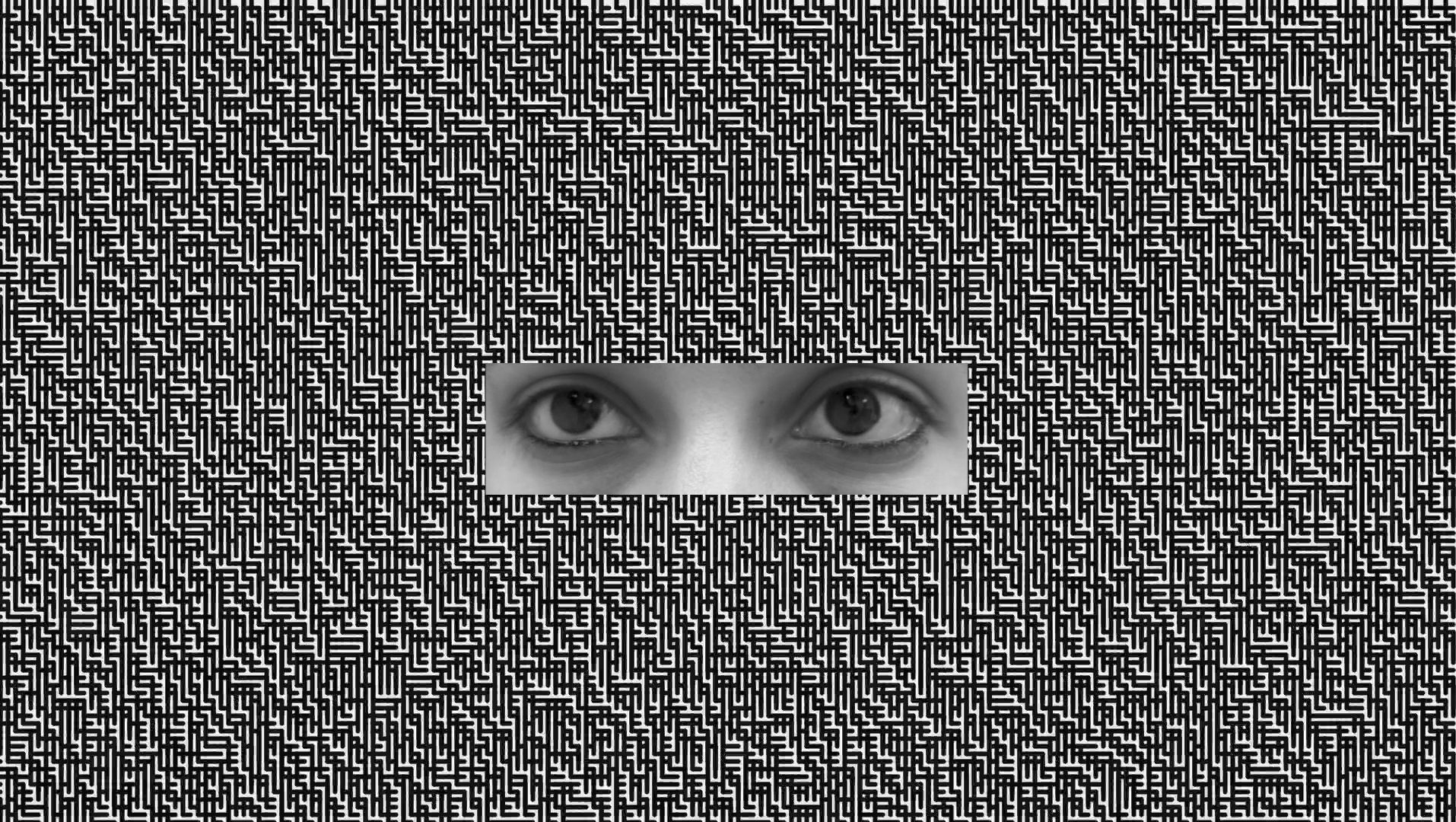Abstract Mazes
︎User interactive piece
︎Printed edition and generated mazes on screen affected by the user’s gaze
︎Adobe InDesign, print (118.34x9.05cm), Processing sketch, Tobii eye tracker, monitor




Inspired by earlier video games like Adventure, I was interested in imagining space in an object.
This object would be treated as a body of information: any narrative could be projected onto it and the viewer would have complete agency in their exploration.
After researching Open Processing and 10 print, I coded some mazes of my own, changed their randomness to make them more abstract. From these mazes, I designed an edition which could be read in a non-linear way, expand, and condense. It embodied my research around non-linearity, space and object.
After obtaining feedback from user testing, I wrote a Processing sketch using the eye tracker.
The final piece is an ever-changing understanding of non-linear narrative potentials of a space (here, a complex network of paths).
February 2020